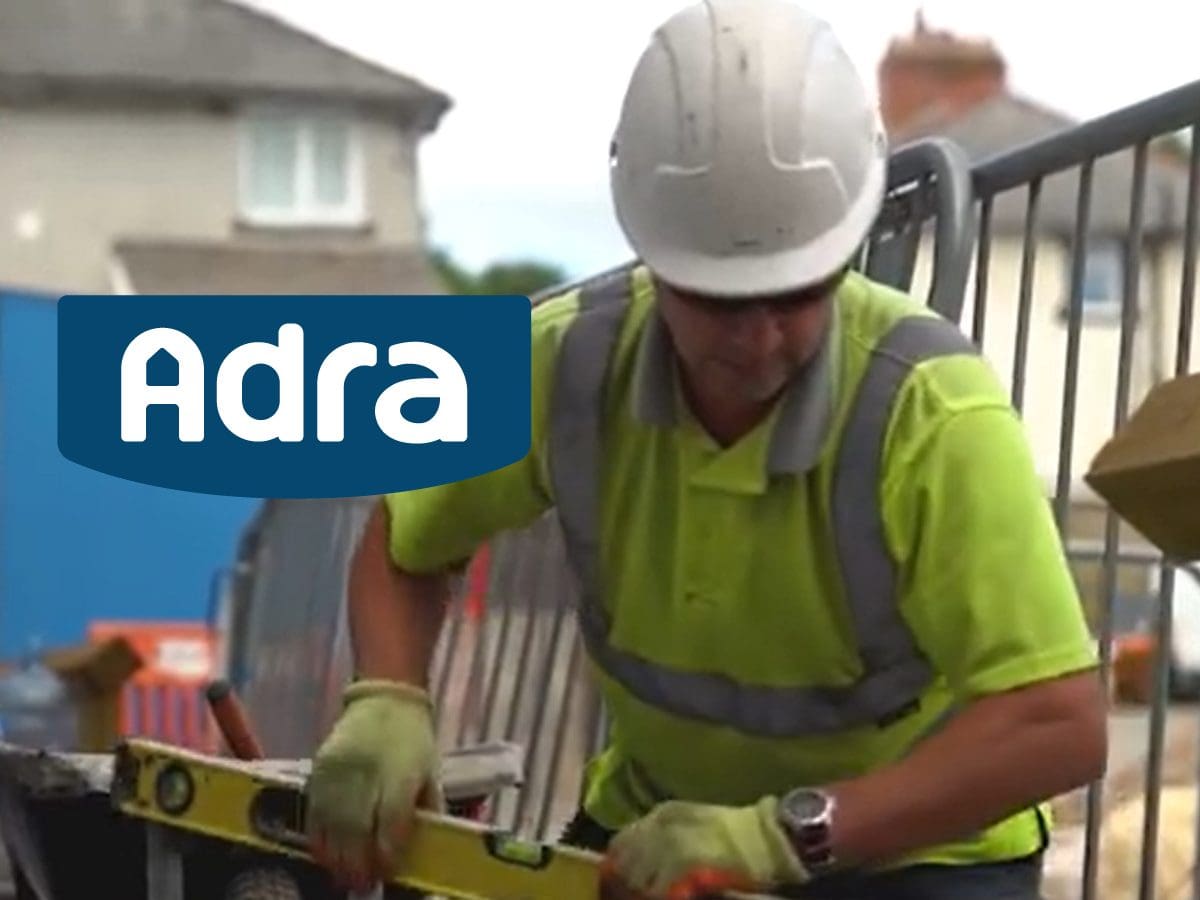A housing association – Adra – is torturing a severely chronically ill woman and putting her life at risk. She lives with both Ehlers-Danlos syndromes (EDS) and severe myalgic encephalomyelitis (ME). Despite her extreme vulnerability to noise and vibrations due to her ME and EDS, the housing association operating a nearby estate sprung construction work on her without warning.
On top of this, the association is refusing to make basic mitigations that could stop her experiencing “agonising” pain. As a result, they have put her through weeks of suffering that she has described “brings her close to death”.
ME and EDS
Jenny Rowbory has been bed-bound for 19 years with vascular EDS and severe ME.
ME is a chronic systemic neuroimmune disease which affects nearly every system in the body. It can cause day-to-day flu-like symptoms, cognitive impairment, different types of body-wide pain, as well as multiple dysfunctions impacting blood pressure, the heart, lungs, and digestive system. Of course, this is a non-exhaustive list – you can read more about its symptoms here.
Crucially, post-exertional-malaise (PEM) is the hallmark symptom of ME, which entails a disproportionate worsening of many of these symptoms after even minimal physical or mental activities.
Severe ME impacts approximately 25% of people living with the disease. In these cases, people living with severe ME are mostly, if not entirely permanently bed-bound or hospitalised. On top of this, they are often unable to digest food, communicate, or process information and are fully dependent on others for their care.
Meanwhile, EDS is a group of 13 types of chronic, hereditary, genetic connective tissue disorders. Specifically, collagen doesn’t work as it should in people living with EDS. In Jenny’s case, she lives with vascular EDS, which causes fragile blood vessels and hollow organs, at risk of life-threatening rupture.
In addition to these, Jenny also lives with atlantoaxial instability (AAI) and craniocervical instability (CCI). EDS and other connective tissue disorders generally cause these. Both present as increased mobility at junctions in the neck. The two can trigger a range of devastating symptoms. You can read more on these here and here.
Adra Housing Association putting Jenny through “torturous pain”
Now, a housing association in North Wales, near where she lives, is putting her through intense and torturous pain.
Specifically, in April, Adra Housing Association began construction work at a housing estate just 20 metres from Jenny and her family’s private home. The construction work will come within metres of her and is set to last for 33 weeks.
However, due to her chronic diseases, the construction noise and vibrations pose a serious risk to her health. As Jenny wrote in her letter to her Plaid Cymru MP Liz Saville Roberts:
It is no exaggeration to say that because of my condition, noise is literally torture for me. It is not merely ‘uncomfortable’ or ‘hypersensitivity’, it is unbearable constant agony and also inflicts lasting damage.
Due to reduced blood flow to all my body (because of vascular compression in my unstable neck due to the CCI/AAI due to the EDS), my mitochondria don’t produce the energy needed for my body to function, so even sound acts as a physical exertion on my failing systems.
A few minutes of pneumatic drill or heavy machinery (e.g. the constant engine noise of a dumper truck all day) is torture and is the same exertion as others running marathons – my heart goes into chronic failure. The vibrations of noise also disrupt my heart rhythms. Sound also produces agonising unbearable spine pain, nerve pain and head pain.
Since this would be a devolved matter, Saville-Roberts has since passed on Jenny’s concerns to Member of the Senedd Mabon ap Gwynfor.
The impact of loud construction on Jenny’s vascular EDS alone would be bad enough. However, with her severe ME, AAI, and CCI, this is made significantly worse. As Jenny has detailed, the noise from the construction equipment:
can push people with my condition into a state of sheer exhaustion, often referred to as a “crash” – that can shut the body’s organs and functions down completely. The Mayo Clinic says: “It may take someone weeks, or even months to return to their previous baseline”… I have already deteriorated and the pain is unimaginable.
Ultimately, Jenny is unable to move away from the noise. She also explained in her letter that doing so:
Is too dangerous unless there is the surgery that I need at the end of the journey, which would fix the damage caused by being moved. I also cannot wear ear defenders due to my neck and also being horizontal against a pillow.
Refusing to listen
Given all this, Jenny and her family have requested some simple mitigations to reduce the impact to her health. For instance, this included attaching silencers to the pneumatic drills and erecting acoustic barriers to limit the noise. They also suggested that Adra’s construction team could move the loud equipment a distance from Jenny and turn these off when not in use.
Initially, Adra agreed to have a meeting about this. However, they did not stop construction work until this took place, so continued to put Jenny through immense pain. Despite these reasonable requests, Adra has largely ignored the impact its construction is having on Jenny.
While they did put in place some acoustic panels, a site manager did a decibel reading which showed they’d made little difference to the sound.
Adra has refused to use silencers on the pneumatic drills. In particular, it told the family that this is because silencers for the small pneumatic drills it is using to dig up pavements do not exist.
Conversely, Adra has said that using the larger drills with silencers would also not resolve the issue. It explained that this is because the net noise levels would be much the same. So, Adra has said to the family that they “feel that they’ve done everything they can”.
Adra continuing to ignore the family’s appeal
The Canary contacted Adra for comment. A spokesperson told us:
We fully sympathise with Ms Rowbory’s situation and have been engaging with the family since we were made aware of issues that have been raised, with visits to both the site and Ms Rowbory’s home being undertaken.
We have offered various sound mitigating measures as a sign of goodwill and to show our dedication to finding a solution.
Acoustic sound barriers have been erected around the works to reduce the noise emissions. It is important to note they are designed to lower noise levels and not totally eliminate noise from construction activities. The contractors also regularly take decibel readings to measure and record the sound coming from the site, which have been within permitted levels.
The contractors on site are adhering to best environmental practices when working to minimise noise levels.
We will continue to take reasonable steps to try and find workable solutions and will continue to keep channels of communications with the family open and updated.”
However, Jenny’s mum Ann told the Canary that:
Adra didn’t ‘offer’ various sound mitigating measures, we had to come up with them ourselves, we had to press Adra hard and doggedly, meeting much resistance, to get them to erect the sound panels. But unfortunately the Site Manager’s decibel readings show that the sound barriers have, in his words, “made no significant difference” to the noise level. And it will only be getting louder as the drill moves closer.
Since Adra are offering no effective sound mitigations, we need them to pause work so that we can soundproof Jenny’s bedroom. A sound expert says that it will take four weeks to soundproof the room properly and cost £20,000 to do it effectively.
We would need to wheel out Jenny’s hospital bed from her room, down a ramp and up a ramp into the conservatory while the soundproofing takes place.
Currently the conservatory doesn’t have a door wide enough for her hospital bed to fit into so a builder would need to make a wider door for the conservatory. The conservatory is even closer to the road than Jenny’s room so the noise would be so much louder, which is why we need a pause in the construction work while we undertake the soundproofing.
The “best environmental practices”?
Ultimately, Jenny urgently needs Adra to stop construction and put measures in place to protect her health. Already, it has caused her to deteriorate. Ann told the Canary that:
Adra say they are working to best environmental practices but they did not need consent for the work from Gwynedd Council. Gwynedd Council only requires new builds to get consent. There is no distinction in law between healthy people and ill people I have been told when it comes to noise concerns so the Council are unable to help Jenny.
So Adra may be following the letter of the law as it stands but not its spirit, the reason why it was written in the first place, to protect people. Adra see this issue therefore as only needing their goodwill rather than compliance with any legal requirement.
It is extremely outdated to consider all people have the same hearing but they are sticking to that premise and say Jenny must use PPE like everyone else but because of her health condition, Jenny cannot. That leaves us in nowhere land!
Moreover, on Tuesday 14 May Jenny confirmed on X that Adra has now moved the drill in closer despite all this.
As ever then, classist, profiteering housing associations are never prepared to do the bare minimum for tenants, let alone disabled neighbours living with chronic illnesses. Unsurprisingly, Adra doesn’t look like it’s going to start now.
Feature image via Facebook – Brenig Construction/the Canary




